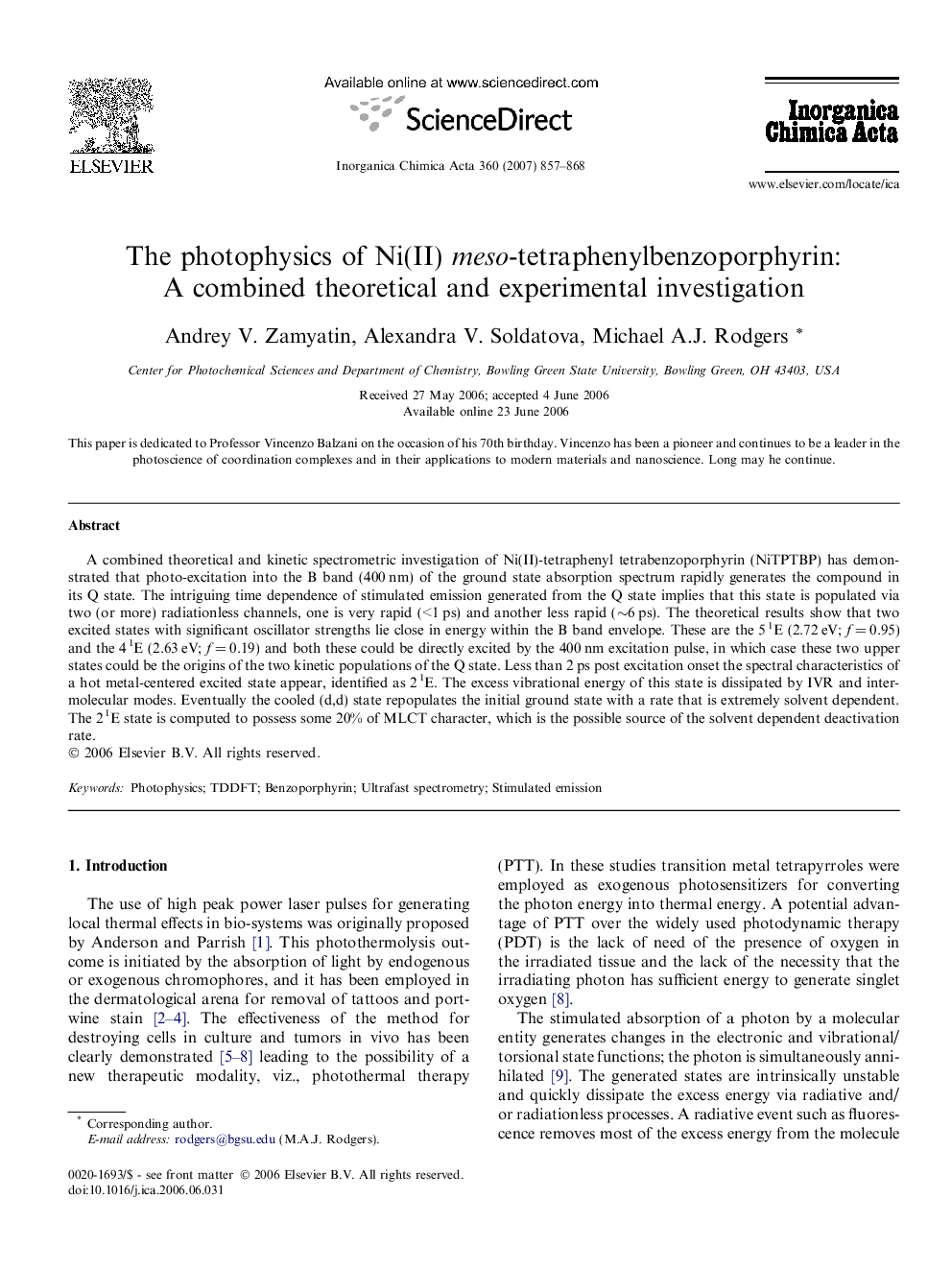| کد مقاله | کد نشریه | سال انتشار | مقاله انگلیسی | نسخه تمام متن |
|---|---|---|---|---|
| 1312762 | 975497 | 2007 | 12 صفحه PDF | دانلود رایگان |

A combined theoretical and kinetic spectrometric investigation of Ni(II)-tetraphenyl tetrabenzoporphyrin (NiTPTBP) has demonstrated that photo-excitation into the B band (400 nm) of the ground state absorption spectrum rapidly generates the compound in its Q state. The intriguing time dependence of stimulated emission generated from the Q state implies that this state is populated via two (or more) radiationless channels, one is very rapid (<1 ps) and another less rapid (∼6 ps). The theoretical results show that two excited states with significant oscillator strengths lie close in energy within the B band envelope. These are the 5 1E (2.72 eV; f = 0.95) and the 4 1E (2.63 eV; f = 0.19) and both these could be directly excited by the 400 nm excitation pulse, in which case these two upper states could be the origins of the two kinetic populations of the Q state. Less than 2 ps post excitation onset the spectral characteristics of a hot metal-centered excited state appear, identified as 2 1E. The excess vibrational energy of this state is dissipated by IVR and intermolecular modes. Eventually the cooled (d,d) state repopulates the initial ground state with a rate that is extremely solvent dependent. The 2 1E state is computed to possess some 20% of MLCT character, which is the possible source of the solvent dependent deactivation rate.
A theoretical and kinetic spectrometric investigation of Ni(II)-tetraphenyl tetrabenzoporphyrin (NiTPTBP) shows that photo-excitation into the B band at 400 nm rapidly generates the compound in its Q state. Stimulated emission from the Q state implies that this state is populated from the B state via two (or more) radiationless channels, one is very rapid (<1 ps) and another less rapid (∼6 ps). Theory shows two π,π∗ states in the B region which can be populated by 400 nm light. Less than 2 ps post excitation a hot metal-centered state appears, identified as 2 1E (d,d). Eventually this state cools and repopulates the ground state with a solvent dependent rate.Figure optionsDownload as PowerPoint slide
Journal: Inorganica Chimica Acta - Volume 360, Issue 3, 15 February 2007, Pages 857–868